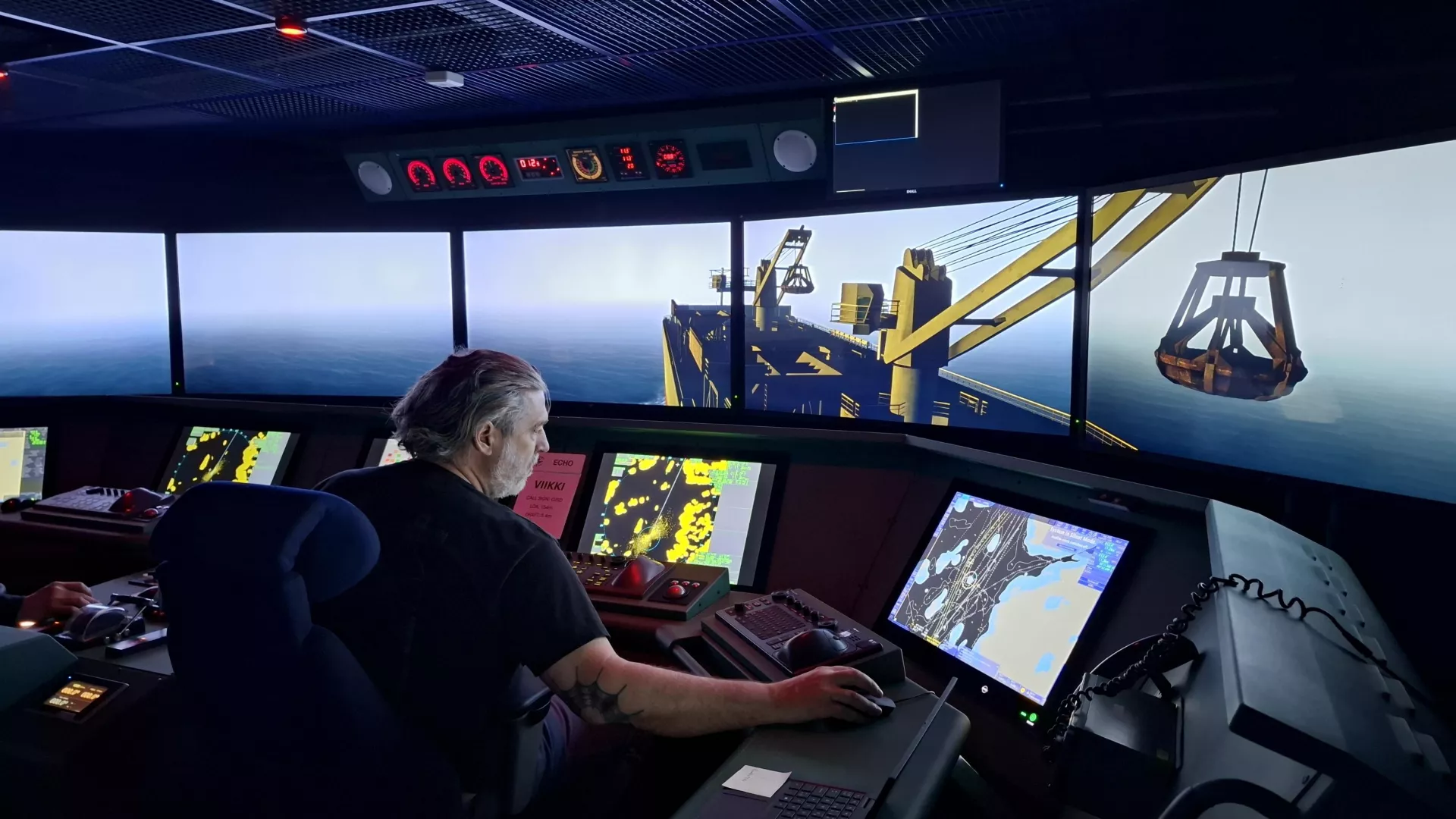Human Factors Are Being Researched in the Use of Remote Pilotage
The Remote Pilotage MVP (Minimum Viable Product) project, coordinated by Novia UAS, focuses on developing and testing concepts for remote pilotage operations and technology. In the beginning of May simulation testing sessions were held at Aboa Mare in Turku to enhance communication between remote pilots, vessels, and Vessel Traffic Services (VTS).
The main reason for the desire to increase the use of remote pilotage in maritime navigation is safety concerns. Maritime pilot accidents and injuries are common because of the nature of this dangerous job. Pilots are responsible for maneuvering ships through congested, often dangerous waterways to get them into or out of ports. Falls, collisions, and other incidents are unfortunately common and often result in injuries and fatalities.
It is unlikely that all pilotage in the future will be conducted remotely, but it can serve as an alternative to traditional pilotage. A combination can also be used, for example, with a more experienced, senior pilot assisting remotely while another pilot is on board the vessel.
Body Language Is Missing
During the simulation tests, Captain Ioannis Dalmiras, a student at Novia, practiced steering the vessel Viikki using remote pilotage.
”It didn’t feel as safe as having the pilot onboard. I received the same information, but the body language was missing, and in the end, as the captain, I’m the one responsible for the ship and need to make the final decisions.”
There was a video connection between the crew and the pilot, but Dalmiras says he didn’t have time to look at the screen.
“The practice conditions were challenging and there was not enough time to monitor the screen since we were very busy with the navigation and dealing with various defects”, says Dalmiras.
The training sessions are designed to be especially challenging, involving oncoming traffic and difficult weather conditions with poor visibility. The conditions in the Finnish archipelago are among the most challenging in the world for maritime navigation. A pilot who is familiar with local conditions provides invaluable support to the ship’s captain and enables safe navigation through fairways.
Pilot Timo Nummi from Finnpilot in Kotka says that anything new can seem frightening at first, and that people tend to initially say no to new ways of doing things. He wanted to participate in the MVP project himself because he is fascinated by the technology behind it and has learned a lot.
”In challenging weather, like when three-meter-high waves form near Utö, remote pilotage could be a good option. I believe hybrid pilotage could work as an alternative in the beginning. Remote pilotage requires investments from shipping companies, especially in technical equipment”, Nummi says.
Organizing the simulator tests has been a major effort for the project team. Human factors testing on this scale has not been conducted at Novia before.
”With these Remote Pilotage tests, I can say that my long-standing dream of having professional Human Factors research expertise in my team has finally come true. It has been great to see how the team has carried out these tests with heart and professionalism” says Mirva Salokorpi Research Manager for Sustainable Shipping at Novia.
Main financer for Remote Pilotage MVP project is Business Finland and partners are Furuno Finland, Finnpilot, Brighthouse Intelligence, Groke Technologies, Kongsberg Maritime and Fintraffic Vessel Traffic Services Ltd.
For more information please contact
Mirva Salokorpi
Research Manager
Research Manager Sustainable Shipping


